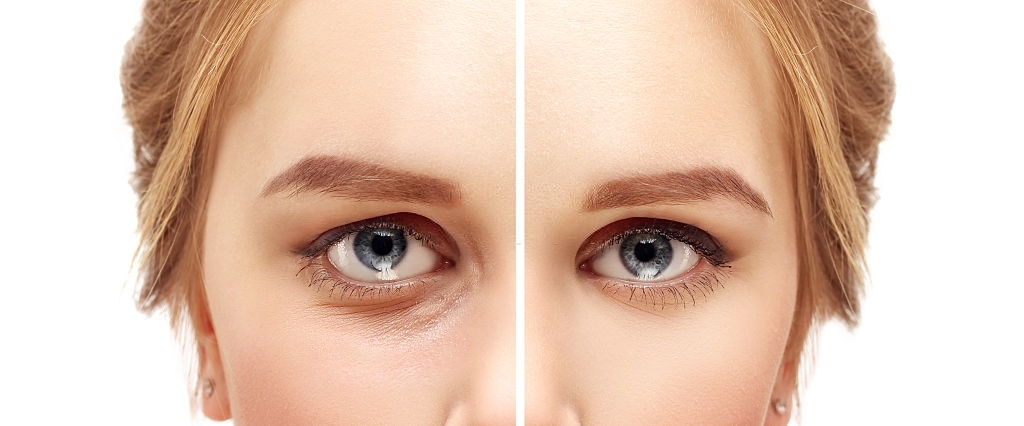Blepharoplasty – Eyelid Surgery Eyelid surgery, or blepharoplasty, is a cosmetic surgical procedure that improves the appearance of the upper eyelids, lower eyelids, or both, by removing excess skin and fatty deposits above and below the eye.
It corrects sagging, puffy, or drooping eyelids, and gets rid of bags and bulges around the eye which make the face look tired. The procedure does not get rid of crows feet, other age wrinkles, or dark circles, but it does restore firmness to the eye area, making the face look more rested and youthful.
Eyelid surgery is one of the most frequently performed types of plastic surgery for both men and women. Most patients are individuals over the age of 35 who want to diminish the signs of aging, although eyelid surgery can also correct eyelid problems in younger people. If you want to improve the area around your eyes and restore a more youthful appearance to your face, eyelid surgery is an effective option to consider.
About Eyelid Surgery
Eyelid surgery is a cosmetic procedure that should only be performed by a board-certified plastic surgeon who has received special training and is experienced in blepharoplasty techniques.
It is important to choose a qualified and skilled plastic surgeon, not only to increase your safety, but to improve the likelihood of a successful outcome. Eyelid surgery is usually performed in a surgical center on an outpatient status.
The procedure often takes 1 to 3 hours to complete both eyes, depending on the amount of work that needs to be done. The patient is given anesthesia for surgery, either a local anesthetic with sedation or general anesthesia.
Eyelid surgery, also known as blepharoplasty, can treat:Loose or sagging skin of the upper eyelid Excess fatty deposits that make the upper eyelids appear puffy Bags under the eyes that make the eye look tired Droopy lower eyelids that expose too much white under the iris of the eye Excess skin and fine wrinkles under the eyes Young adults who have inherited droopy eyelids Lack of a fold in the upper eyelid that affects 50% of people of Asian descent The incisions are made within the natural crease above the eyelid for upper eyelid surgery and just under the inside of the lower lashes for lower eyelid surgery.
The placement of the incisions allows the surgeon access to the treatment area, in order to remove excess skin, remove or redistribute fatty tissue, or modify muscle tissue in the eye area, without leaving noticeable scars. Recovery After eyelid surgery, you can expect to feel some tightness and soreness in the eyelids as the anesthesia wears off.
There will also be temporary burning, itching, swelling, and bruising in the eye area, as well as excessive tearing and light sensitivity. Any discomfort can be controlled with oral pain medication and eye drops may be recommended for at least a week or two during the healing process.
Average time for healing process and to resume normal activities: Bruising: 1 to 2 weeks to subside Swelling: 2 to 4 weeks to subside Incision lines: Can take up to a year to refine and fade Read or watch TV comfortably: 2 or 3 days Wear contact lenses comfortably: 2 weeks or more Normal sedentary activities: 7 to 10 days Normal strenuous activities: about 3 weeks Complete healing: 4 to 6 weeks, depending on age and general health Before you go home, the surgeon will provide you with instructions for post-surgery eye care, including; how to clean and care for your eyes, recommended pain medications and eye drops, when to schedule a follow-up appointment, expected healing time, and when to resume your normal activities.
It is important to follow the surgeon’s post-surgery instructions, as this greatly affects the overall outcome and success of the surgery. Risks and Complications Any surgical procedure involves some degree of risk, even with a skilled surgeon under the best of circumstances.
Before undergoing an elective cosmetic procedure such as eyelid surgery, a patient should consider both the benefits and risks of surgery. Unexpected events, such as an infection or reaction to the anesthesia, are always a possibility.
Other possible complications may also occur with eyelid surgery, either temporarily or in rare cases permanently, so it is important to discuss the risks with your surgeon, including:Blurred or double vision Bruising and swelling Dry Whitehead eyelids pulling down Slight asymmetry in healing or scarring Difficulty closing eyelids completely, even when sleeping Possibility of revision surgery Cost of Eyelid Surgery The average cost for eyelid surgery (upper and lower) ranges from $4,000 to $5,500.
What you pay will vary based on the surgeon’s fee, geographic location, and the extent of the surgery. The primary costs involved with eyelid surgery include: the surgeon’s fee (which is determined by training, skill, experience, and geographical location), hospital or surgical facility costs, anesthesia, medications, medical tests, and follow-up appointments.
Results The final results of eyelid surgery are often visible within 1 to 2 months after surgery. The eyelid surgery will correct certain conditions permanently, but natural aging will continue to occur. The regular use of a sunblock with a SPF of 30 or more will help to maintain surgical results.

